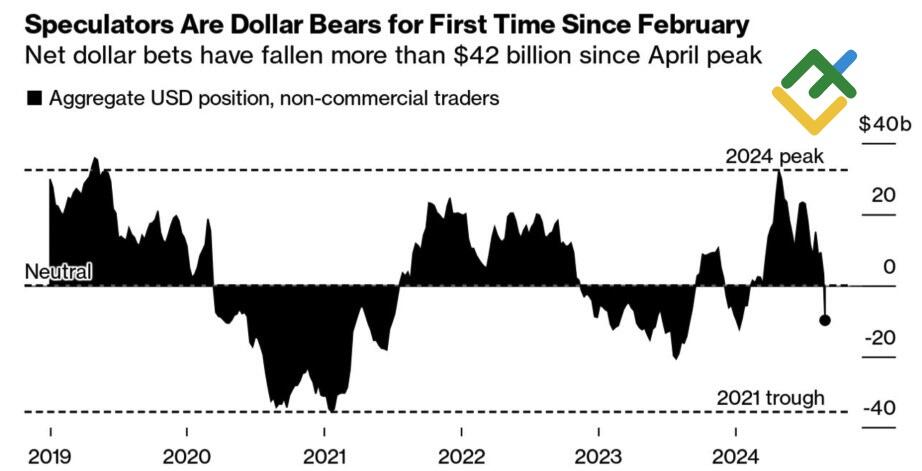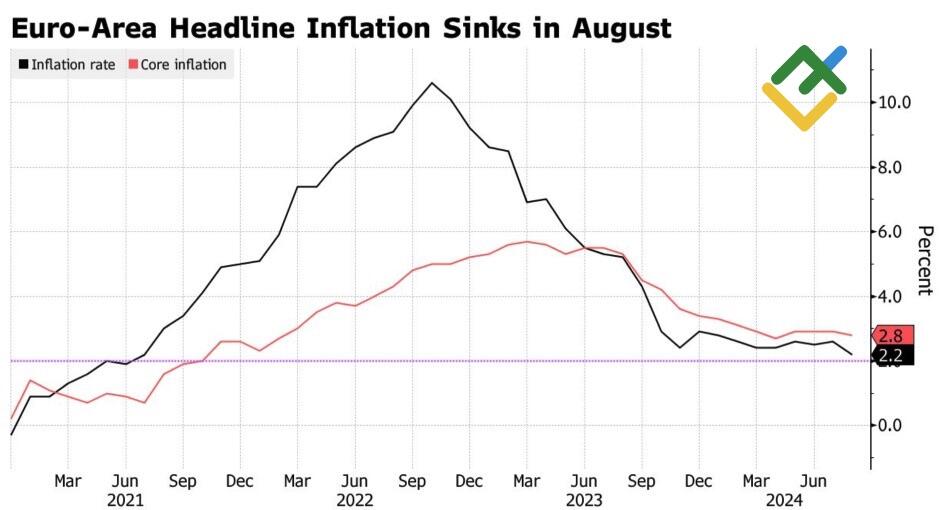
Should the US Federal Reserve choose to act in response to growing discontent over the cooling labor market, the August employment data will serve as a key driver for the EURUSD pair. Let’s discuss this topic and make a trading plan.
The article covers the following subjects:
Highlights and key points
- The winding down of speculative short positions on the US dollar became a reason for the EURUSD rebound.
- The slowdown in EU inflation is pushing the ECB to cut rates in September.
- The August labor market report will be a litmus test for the greenback.
- The EURUSD pair’s consolidation will allow traders to open more short trades, adding them to the ones formed at 1.118 and below.
Weekly US dollar fundamental forecast
A disappointing US jobs report for July, followed by Jerome Powell’s remarks in Jackson Hole indicating that the Fed is not in favor of a slowing labor market, prompted speculators to sell the US dollar. In the week leading up to August 27, asset managers and hedge funds increased their short positions on the US dollar to their highest levels since January. The partial closing of these positions in response to the release of US and European inflation data allowed EURUSD bears to gain ground.
Non-commercial traders’ positions on US dollar
Source: Bloomberg.
Euro sellers were encouraged by the news that consumer prices in the eurozone slowed to 2.2%, the lowest level since 2021. The indicator made the derivatives market believe in the ECB’s deposit rate cut and allowed Governing Council members to adopt a more dovish stance. Bank of France Governor François Villeroy de Galhau stated that the ECB should adopt a proactive stance and that it would be prudent to loosen monetary policy at the next meeting. His colleagues Maddis Muller and Olli Rehn supported the idea.
The futures market anticipates that the ECB will implement a 150 bp monetary expansion by the end of 2025, which is one additional cut than the central bank’s own forecasts. The officials anticipate that European inflation will accelerate by the end of the year, while derivatives indicate otherwise. The outcome will be revealed in due course. Meanwhile, investors are closely monitoring the US employment report for August.
EU inflation change
Source: Bloomberg.
Analysts at Bloomberg project an uptick of 165,000 in the indicator, a decline in the unemployment rate to 4.2%, and a pick-up in average wages from 0.2% to 0.3% m/m. They believe that the weak figures for July were the result of the impact of Hurricane Beryl on the US economy, which resulted in approximately 450,000 individuals being unable to work and more than 1 million switching to part-time jobs.
Should the labor market recover, the derivatives market will reduce the scope of the Fed’s anticipated monetary expansion, which will have a positive impact on the US dollar. However, an unanticipated decline in employment could prompt the Fed to cut the key rate by 50 bps in September, giving EURUSD bulls an opportunity to gain ground.
Given the current expectations, the major currency pair will be closely watched ahead of the key labor market report for August. Should the pair fall in early August, it may be a signal for investors to buy the US dollar on rumors and prepare to sell it on facts. Conversely, a consolidation in the EURUSD pair could indicate a reluctance among traders to take a more active stance.
Weekly EURUSD trading plan
In light of the current market conditions, there is a high probability of the euro reaching 1.1 and 1.0945 against the greenback. This provides an opportunity to keep short trades on the EURUSD pair initiated at 1.118, 1.115, and 1.1115 open should the pair’s current decline persist. If the pair consolidates, one can open more short positions on pullbacks.
Price chart of EURUSD in real time mode
The content of this article reflects the author’s opinion and does not necessarily reflect the official position of LiteFinance. The material published on this page is provided for informational purposes only and should not be considered as the provision of investment advice for the purposes of Directive 2004/39/EC.
{{value}} ( {{count}} {{title}} )
This post is originally published on LITEFINANCE.





